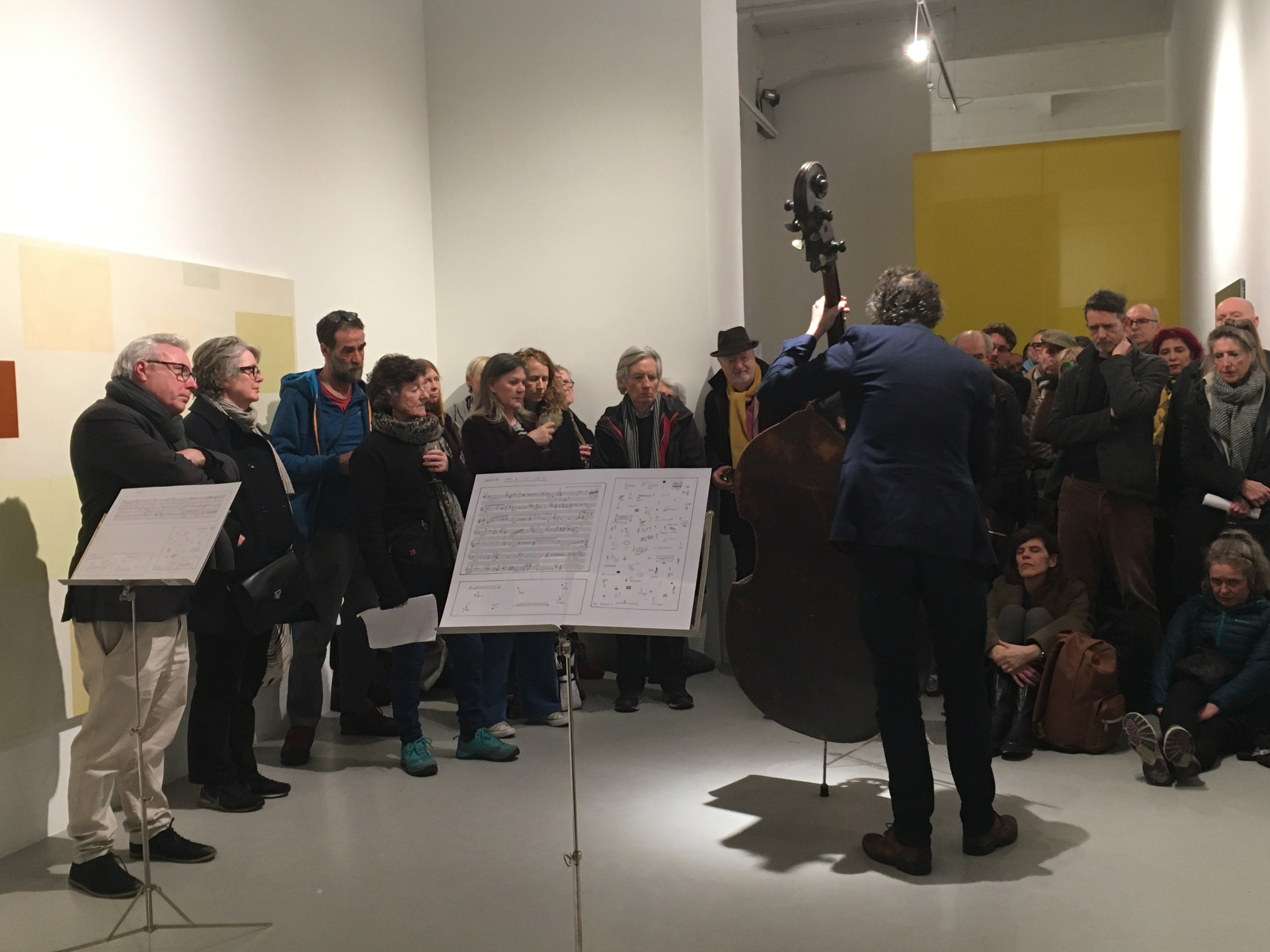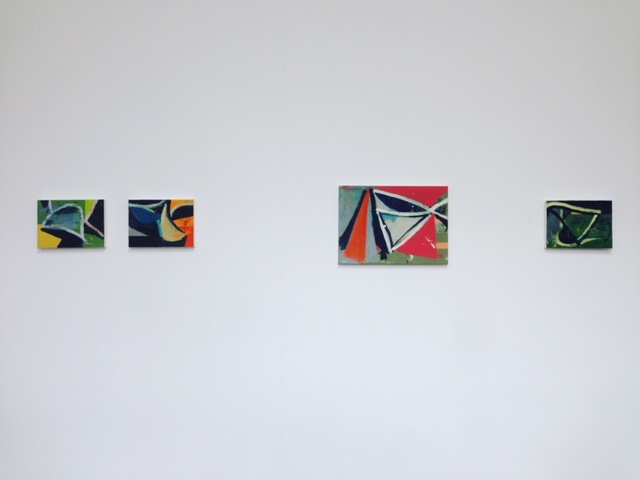David Ryan
Staff. Artist.

David is an artist involved with painting, video and also music. At ARU he is an Associate Professor in Fine Art 0.2, mainly dealing with PhD students as a supervisor. His practice is a little complex, it crosses disciplines but also attempts to maintain something of the traditional core of those disciplines; occasionally he allows these to interact from different perspectives within an exhibition context. Video as a time-based medium is often, therefore, a means for him to think across the sonic and the visual.
What one thing (a piece of art, design or other media, a personal or historical event etc) inspired you to do what you do now?
It’s quite difficult to isolate one thing. Possibly meeting American composer John Cage, and being exposed to his whole aesthetic, when I was in my mid-twenties. It was at his 70th birthday anniversary event organised by the Almeida Theatre in London. Cage was always seen as the great ‘permission-giver’ – and true to form after a brief conversation with him I felt emboldened enough to engage with music and sound (from totally zero training so to speak). I later had the good fortune to work with other members of the original Cage New York circle of composers: Earle Brown and Christian Wolff. All of these meetings led to further research and still impact on what I do, encouraging me to look deeper into sound and performance in conjunction with my painting practice.

What single piece of advice would you give your younger self?
Maybe, it’s opposing advice: to try and do things in the ‘right order‘ to grow and build a practice - I don’t feel I’ve always done that – but also the opposite: don’t worry about doing things in the wrong order if it works for you.
What’s the most valuable thing you took away from education?
I studied my BA Fine Art at what is now Coventry University. I began the course a few years after the militant regime of members of Art & Language (the conceptual critical art group) ran the course, and where, during their tenure (legend had it), painting was effectively banned, and the studios full of typewriters. Visitors at that time had included conceptualist Joseph Kosuth, who delivered his remarkable lecture ‘Painting vs Art vs Culture (or you can paint if you want to but it probably won’t matter).’ But by the time I arrived the department re-instigated a broader set of practices that reflected the first wave of ‘pluralistic’ fine art teaching – conceptual and performance activities co-existed side-by-side with the more traditional activities of painting and sculpture. So there was a sense of liberation in this – of being able to invent, or re-invent on one’s own terms.
I think Fine Art education is always placed within and beyond disciplines; what you encounter in terms of broader culture, film, music, and reading may really influence what you do or even how you live. This is what I took from my education, that the meaning of works can percolate through to your very existence, how you operate in the world itself.

What do you think the future of fine art, and university fine art courses, will be like?
It’s very difficult to crystal ball gaze. But I think what has changed, and will further change, is the nature of that openness within Fine Art I mentioned. For example, how practices connect to the social environment, identities and also climate crisis etc., are clearly so important for the agenda. I feel within artists’ work out there in the world this is still being worked through. It has had, for all good intentions, mixed results so far: the worst examples might simply state the obvious or proselytise, while others can be surprising, inventive and so forth.
The other side of the coin is the burgeoning growth of the art world as a global commercial enterprise. This throws up a huge amount of artworks now literally every second as social media has democratised practices and their outlets to a greater degree. So students are already met with an increasingly dizzying array of online styles and quality, which makes it important that they can make decisions, qualitative and intellectually, about what they are receiving. How these issues will pan out it’s hard to say but each will have a role in shaping and informing the content of courses. But I do hope, within these changing conditions, the cultural openness of Fine Art can be fostered in new ways.
What’s the most interesting thing you get to do in your role?
To engage with other people’s research. Whether this is student’s ongoing PhD research/practice, or working with other research groups (such as the French Reseau Peinture group with whom I have collaborated on several occasions).

How does any work you do outside the university tie in with your work at ARU?
I would say it all does. Ultimately I am dealing with the same basic problems as my research students: It is practice-based research, with its associated questions around how to proceed, what dimension to explore, where is it going, what are the findings, etc.? I’m interested, as most practitioners are, in the instinctive relationship to forming materials: the hunches, failures, detours; whether this is drafting an article, making a painting, a piece of music, a video, or whatever. Having experience in this arena can help others struggling with the same issues, particularly within the somewhat formalized conventions of the PhD.
Tell us one thing about Cambridge that other people might not know...
Well I’m afraid I have no top secret tips here. But I think, although world famous, the huge scope of the University collections in Cambridge should be taken advantage of, and hold some surprising things. One example might be, from my personal experience, the discovery of a set of ritual masks from the Temple of Artemis in Sparta (excavated in 1911) that are in the Museum of Classical Archaeology. They hadn’t been shown for years (some are now currently on display – but I had the luck to be shown the whole collection then in storage). These masks and also earlier pottery fragments are thought to be part of a sacrificial ritual that was undertaken at the temple, later encouraging the Romans to build an amphitheatre to view.
The strange historical narratives surrounding these objects are just one example of the often astonishing exhibits within the Cambridge collections, not just Kettle’s Yard or the Fitzwilliam, that are really important to check out. Not to mention the University of Cambridge Library’s collections of rare books and illuminated manuscripts, which is also a must: some extraordinary images can be seen there.
